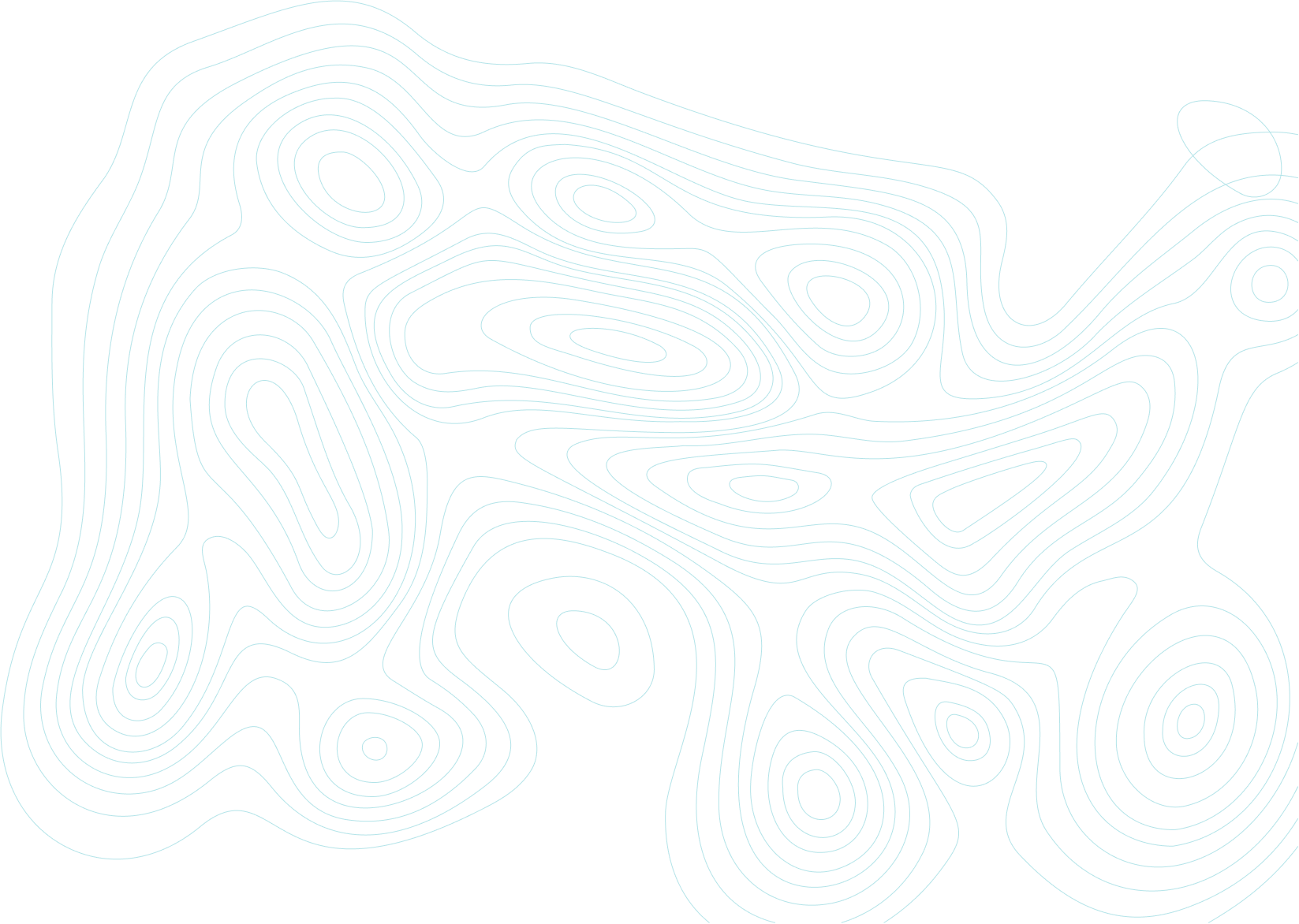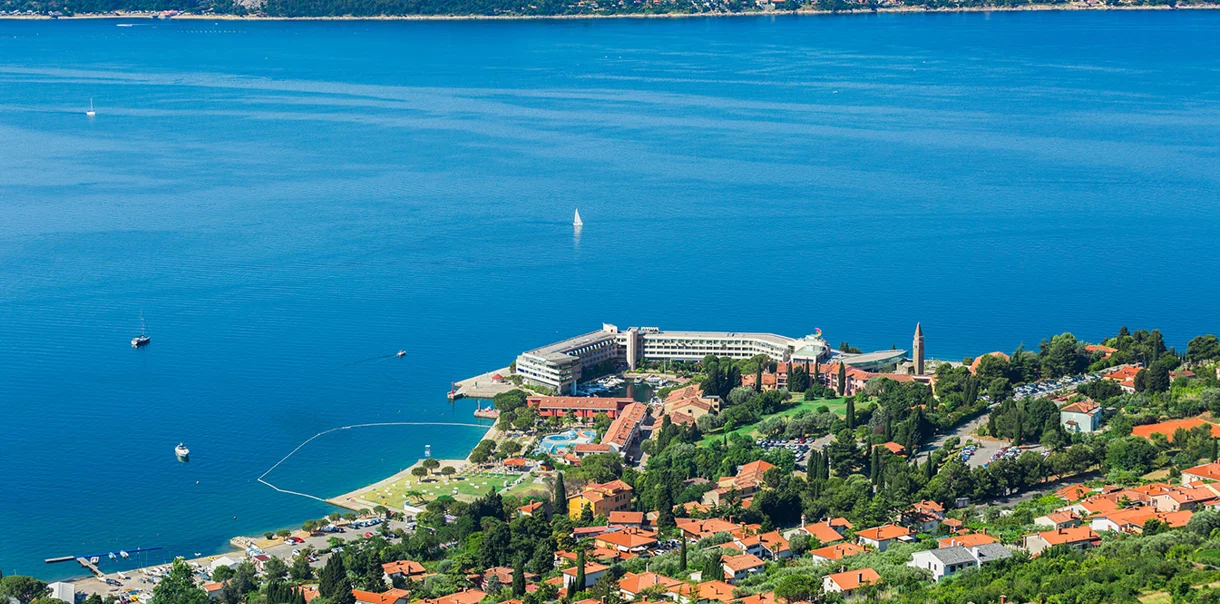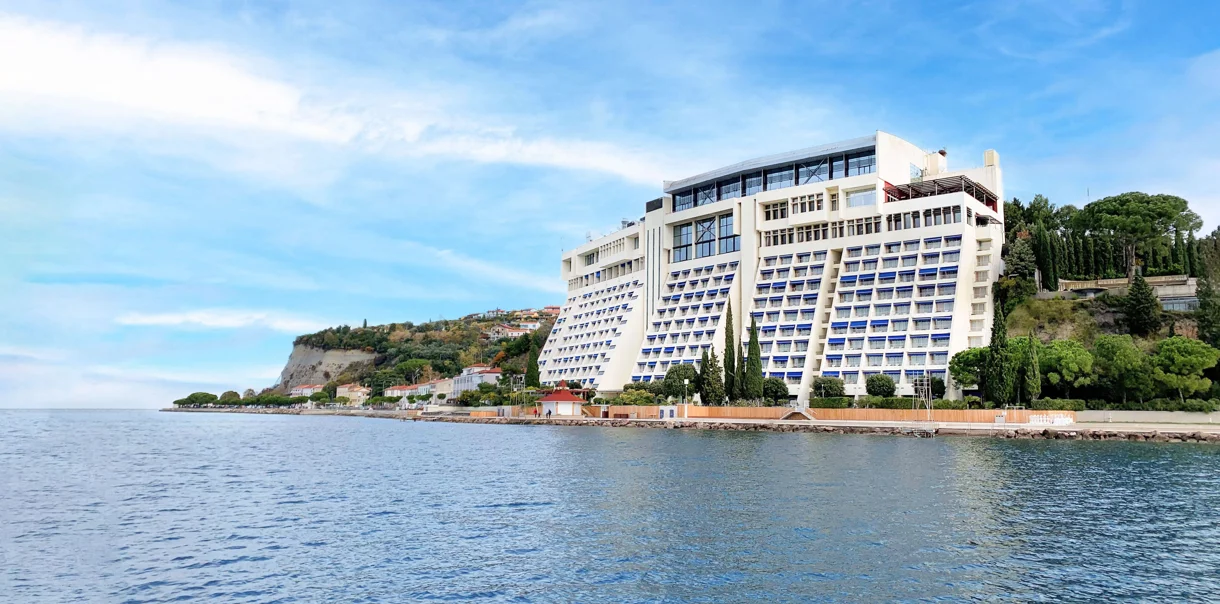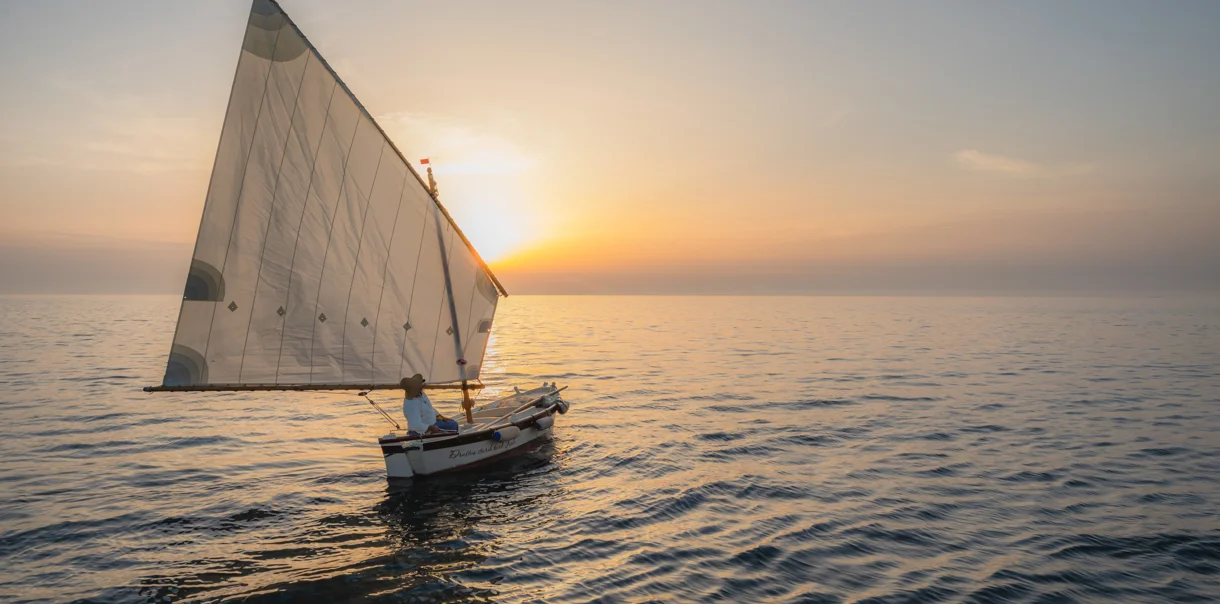Dolphins are mammals, even if by appearance they look more like fish. They belong to the order of cetacea (there are more than 36 different species of dolphins in the world). Dolphins have all the characteristics of terrestrial mammals: they are warm-blooded, they breathe with lungs and the female gives birth to a live calf, which feeds with its mother’s milk. An interesting fact about dolphins is that they are never actually fully asleep. Only half of their brain is asleep while the other half observes the surroundings and takes care of the swimming and every four hours the halves exchange their functions. So with dolphins, half of the brain is always awake. Thus a dolphin never sleeps but swims its whole life.

Active recreation / Dolphin watching on the Slovenian coast
The Slovenian coast stretches for 43 kilometers and is the third shortest coastline in Europe. Only Monaco and Bosnia and Herzegovina have shorter coastlines. The surface of the Slovenian sea is approximately 300 square kilometers. Despite its small size, numerous amazing animals can be found in the Slovenian sea. One of the most beautiful and interesting animals in the Slovenian sea is undoubtedly the dolphin. In our seas, bottlenose dolphins live permanently, whereas in the past there were also common dolphins, which haven’t been seen in the last years. Sometimes striped dolphins also swim this far.


Dolphins on the Slovenian coast – bottlenose dolphins (Tursiops truncatus)
Bottlenose dolphins are the most well-known and most beloved species of dolphins. Their backs are dark grey whereas their bellies are of a lighter color. Their skin is smooth and soft, their body very hydrodynamic so they can glide easily through the water. The feed on fish, which they just swallow without chewing, despite the fact that they have from 50 to 120 sharp teeth in their mouth. A layer of subcutaneous fat a few centimeters thick protects them from the cold.
Dolphins copulate in spring or summer, the gestation period is twelve months. When giving birth females are helped by other dolphins, who act as midwives and at the same time protect the female against possible threats. Even after birth, dolphins keep protecting the mother and her calf. Usually, a female gives birth to one calf and nurses him for sixteen months, whereas the calf stays with its mother for three years.
The life expectancy of dolphins is from 40 to 60 years, but their average lifespan is about 30 years, mostly due to all the dangers they face in the sea. Their existence is endangered mainly because of humans and their actions: sea pollution, excessive fishing, and heavy maritime traffic.

Dolphins communicate with clicks and whistles. Each calf develops a specific whistle, which then becomes its name or signature and helps us recognize it. Dolphins call each other with whistles and have very complex communication. They also use body language to communicate.
Dolphins have flexible lenses in their eyes, which allow them to see underwater and above the surface. Dolphins weigh from 150 to 500 kilograms and can grow to three meters in length.

Studying dolphins with the Morigenos society
The Morigenos society has been following and studying dolphins in the Slovenian sea since 2002. Most of the time they observe dolphins using photo identification, which allows them to monitor dolphins based on the marks they have on their bodies, especially on their dorsal fins. With the help of photo identification, some of the dolphins that swim regularly in our seas, have been given names (Kai, Amanita, Emanuela, Daphne, Deinon, Morigenos…).
From 40 to 100 dolphins currently, live in the Slovenian sea. Of course, their habitat isn’t only in the Slovenian sea, but also in the Italian and Croatian.

The Morigenos society monitors various pods of dolphins with the aid of photo identification: they follow their movements, their pod dynamic, and feeding methods. Dolphins swim quite close to shore but they can also swim some kilometers away from it. The main problem for them is heavy maritime traffic.
Often the society organizes fieldwork weekends, dedicated mostly to students who want to get to know the various ways of dolphin watching and actually see dolphins. During the summer the society also organizes research camps, where anyone can learn about the different research techniques and dolphin watching methods.

Where and when can dolphins be seen on the Slovenian coast
There is no golden rule where and when one can see dolphins in the Slovenian sea. You need to have a bit of luck and be in the right place at the right time. However, winter is definitely the most appropriate time of year for dolphin watching, as there is less traffic and dolphins can stay closer to the shore. During the summer the mornings are the best time for dolphin watching. Moreover, it is very important that the sea is calm, as dolphins can’t be seen in rough seas amongst the waves. Sometimes guests in hotel Histrion and Vile Park can see dolphins jumping out of the water right from the hotel’s restaurant.
Along the Slovenian coast, dolphins have been spotted most often near Piran’s Punta and Bernardin Resort, where they can come as close as 50 meters from the coast. They can also be seen near Moon bay or in front of Koper, Izola, and Portorož. Dolphins are hard to spot as they spend most of the time underwater. They come to the surface for a short time only in order to exhale and inhale and then they return underwater. Sometimes dolphins can be spotted for several consecutive days and then not at all for a whole week.

If you see a dolphin while you are swimming, do not approach it. Dolphins are wild animals, extremely strong and at home in the water, whereas we are only “visitors”. Dolphins could harm us involuntarily or on purpose, as they are very unpredictable. It is thus inappropriate to seek contact with them. Dolphins pose no threat to men if we don’t seek contact with them. If we get too close, a blow with their tail can be dangerous or they can jump on you.
If you see dolphins while you are on a boat, the easiest way to watch them is by turning off the motor of the boat. Be grateful that you can watch them. If a pod of dolphins is moving quickly, we can follow them but we need to maintain an appropriate distance and drive calmly. They should not be approached more than 50 meters of distance. If dolphins will want to come closer, they will do it themselves and we shouldn’t be pushy.

Dolphins are known to have saved lives. Various times dolphins protected swimmers from sharks (not in the Mediterranean sea).
Hoteli Bernardin – dolphins day
Hoteli Bernardin in Portorož recommends Dolphins day to their guests. It has been organized by the Morigenos society for many years, usually, it takes place in August. Participants can learn everything about the life of dolphins in the Slovenian sea, about the society’s work, about the different methods used to search for dolphins, they can attend various workshops, go on a panoramic boat trip,…
Dolphins are an important part of the sea, also in Slovenia. We all need to be aware that they need to be protected efficiently so they will feel safe in our seas and continue to call them home also in the future.










